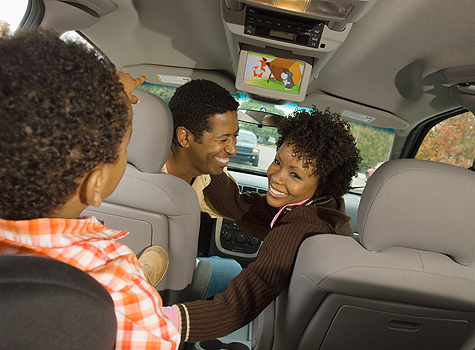Blog

Safety Tips
Three Car Safety Tips for Toddlers
With a toddler on board, even a quick trip to the store can sometimes seem like a hairy rollercoaster ride. Keep your pint-size passengers protected and secure on the road with these tips:
1. Avoid car seat mistakes
Most new parents admit that installing a car seat can be perplexing. Even experienced mommies and daddies don’t always get it right. In fact, some disturbing statistics show that 73 percent of parents fail to either set up a car seat correctly, or get their kids properly strapped in.
Let’s face it: getting a petulant toddler buckled up and ready to go is no easy task. Even if it’s a hassle though, it’s never a good idea (not to mention illegal) to allow your child to ride unrestrained. What may seem like a tiny concession at the time may have serious consequences.
Here’s the scary news: car crashes are the leading cause of death for children, and most crashes happen close to home. So never skip the car seat, even for short drives.
We can’t stress it enough – the car seat’s a crucial accessory that could save your little one’s life should you get into an accident. Car seats drastically reduce the risk of death and serious injury in a collision. (Up to 71 percent for infants and 54 percent for toddlers, according to the 2014 Motor Vehicle Safety Fact Sheet.)
Make a mental checklist of these safety guidelines the next time you get in the car with your infant or toddler:
First, make sure the car seat is fastened to the car correctly. The seat shouldn’t wobble more than one inch from side to side or forward.
Next, ask yourself: is the harness strap snug enough? Leaving too much slack in the harness can be risky. If you can pinch the harness between your fingers, it probably needs to be tightened. (Be careful though: don’t over-tighten the straps so that your child is uncomfortable.)
Remember, it may be freezing out but it’s wise to avoid winter jackets inside the car. Bulky winter coats leave too much wiggle room between the strap and your child.
Don’t skimp on the car seat! Buying a used or outdated car seat could lead to disaster. When it comes to old car seats, you never know what you’re getting. There are chances it might be faulty, or even recalled. Even at a bargain price, it’s just not worth the risk.
2. Rear-facing or forward-facing?
Your kiddos may put up a fuss, but it’s in their best interest to keep them rear-facing as long as possible. The American Academy of Pediatrics (AAP) suggests you keep children in a rear-facing seat until they're at least two years old. Why? It’s five times safer for your precious babies to ride rear-facing.
(Keep in mind, each car seat has specific height and weight limits for rear-facing children. Consider transitioning your kids to a forward-facing seat when they become too tall or heavy for the seat.)
3. Does my child still need a booster seat?
Booster seats help prop up your tiny tots, so the seatbelt can keep your kids better restrained. Without a booster seat, an ill-fitting seatbelt can do more harm than good in an accident.
When can your kids stop using the booster seat? If your six-year-old is too embarrassed to use a booster seat, you’ll have to show some tough love. Children should continue to use booster seats until they’re at least 8 years old and/or 4 feet 9 inches tall.
Unfortunately, accidents happen. That’s why it’s important to prepare yourself for the worst-case scenario. Speak to TOPCHECK agents or check for the best Auto Insurance rateS at http://topcheck.com.ng
Posted on November 2015,12 // Author: Admin